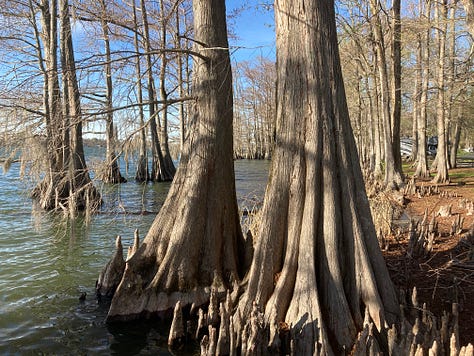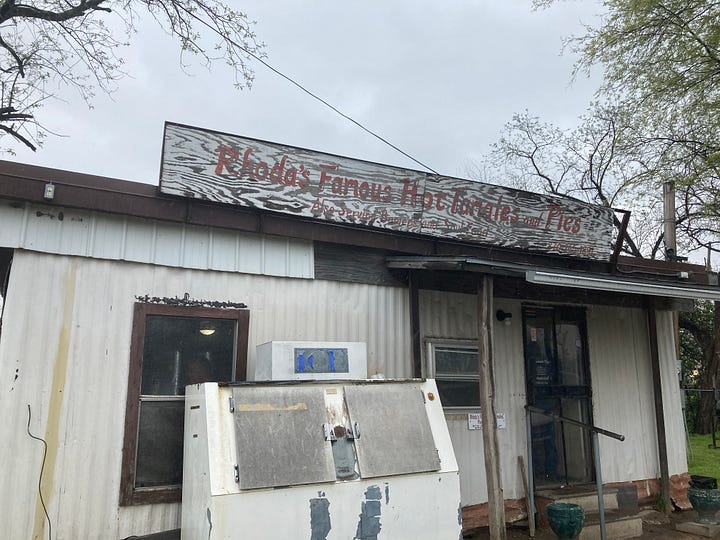The Great River Road National Scenic Byway
It is a great river, truly spectacular if you’ve never seen it.
You’ve heard of Route 66?
The Appalachian Trail?
But have you heard of The Great River Road National Scenic Byway?
Marked by green-and-white highway signs that look like a steamboat’s pilot wheel, the Great River Road runs through ten states along the Mississippi River from Minnesota to the Gulf of Mexico. It was designated a national scenic byway in 2002.
We had originally intended to travel on a longer stretch that included Kentucky and Tennessee, but we spent most of the time on the byway in Arkansas and Louisiana. Our leveling system failed and needed to be repaired about a week before we were to depart, so our river trail adventure was cut short by a number of days.
The Great River Road isn’t a single road. It’s many different roads that guide you on a route along the Mississippi River. The Great River Road runs on both sides of the Mississippi River simultaneously. Travelers have the option of riding on the western bank or the eastern bank and that’s what we did, spending some time in Mississippi as well.



They say Mississippi may derive from an Ojibwe Indian word misi-ziibi, meaning “Great River”.
It is a great river, truly spectacular if you’ve never seen it.
While I knew there were many rivers that flow into the Mississippi, I didn’t know there are areas that kind of swirl near and around the great river forming the delta, but also “lakes” and “islands”.



The first of these lakes we stayed at was near Memphis, the Mississippi River State Park, Beech Point in Marianna, Arkansas.
We had the entire park to ourselves, after all it was March. In the first photo on the left, you can kind of see the great river road across the lake, in a larger picture you can certainly see it. We stayed for two nights.
The cats are always interested in strangers who happen to float by. A braver soul than I. It was breezy and quite chilly that morning!
I always have a plan when we travel, this particular trip was about the Great River, but also Southern and Cajun food and Cajun country in Louisiana.
There was no reason to not start the food part of it in Arkansas while traveling the Great River road.
I love quirky and quirky is what we did!
Southern Bar-B-Q
Jones Bar-B-Q Diner 219 West Louisiana Street Marianna, AR 72360
Believed to be by the Southern Foodways Alliance to be the oldest black-owned restaurant in continuous operation in the South; a cool neighborhood barbecue joint that has been in business for over 100 years; meats are smoked on-site; served on plain white bread with thin, vinegar-based sauce and cole slaw. The restaurant has received rave reviews and was featured in Saveur Magazine and on CBS This Morning. Named by the James Beard Foundation as an American Classic in 2012.
Navigating the neighborhood in a 30 foot Class C RV was interesting. It was a regular family style neighborhood where Mr. Jones situated his famous sandwich stand. We parked on the cross street. It was a tight squeeze!
Mr. Jones proudly displays his James Beard award above the window where one places their order directly to him.


One with slaw, one without.
Hubby went back and got a second one.
From the facebook page:
Hours are 7 AM until the food runs out.
There is NO MENU. All Jones BBQ Diner serves is a pork BBQ sandwich on Wonder Bread.
Boy was it good too.
Another great river road stop was at Lake Bruin State Park in Saint Joseph, Louisiana.
Lake Bruin was truly a magical place. Up to this point in my life, I hadn’t ever seen cypress trees before.









All of this right outside our door.
I think I took about 300 photos. You really couldn’t take a bad picture.
Mother Nature at her finest.
Cypress trees have a unique root system that allows them to grow in waterlogged soils. The roots of cypress trees grow in an upside-down “U” shape, with the upper part of the root system above the water level and the lower part submerged in water. That’s what those nodules at the base of some of those trees are.
We actually bought a plank of cypress wood to make a sofa tray table for the RV. My master carpenter husband promised this for our next adventure. It will be beautiful I’m sure.
One thing we did discover in the South was the plate lunch. Up North, we call it the lunch special. With both you get a main event and two sides.
Walking Pig 139 Plank Rd Saint Joseph, LA 71366
Named after an iconic cafe & tavern in St. Joseph, The Walking Pig is a modern Southern pub serving a varied menu of hand-crafted foods & beverages. Housed in a beautifully renovated 1930’s storefront in the business district of Plank Road, The Walking Pig is surrounded by an eclectic downtown scene of boutique shopping, art, history, and architecture, all nestled at the foot of the Mississippi River Levee and blocks away from the historic Tensas Parish Courthouse.
I had read about the Walking Pig and wanted to try the barbecue. Since we were right there in St. Joseph Louisiana, we went.
It did not disappoint.
St. Joseph, a historic riverboat town is located along the Mississippi River levee in one of the state’s poorest parishes. During the American Civil War, St. Joseph was an important landing point for the Confederacy.
The town was also a key location for the Jesse James gang, who robbed two stores in western Mississippi and took shelter in abandoned cabins on the Kemp Plantation south of St. Joseph.
Currently, local entrepreneurs are buying historic buildings, renovating them and turning them into unique shops and restaurants. The Walking Pig is one of those renovations, the owners are from the area and had gotten their start with a food truck in Nashville and then returned to St. Joseph to be part of the revival of the downtown area.
I had the smoked brisket plate lunch with creole slaw and Zapp’s chips.
Writing this, I am remembering how good it was.
Worth a stop if you’re ever in the area.
Tamale Trail
We stumbled onto the Tamale Trail quite by accident while traversing the Mississippi. We were camping at Lake Chicot State Park, near Lake Village, Arkansas and in looking at our departure route I saw Rhoda's Famous Hot Tamales on the map.


Yelp review:
Don't let the outside of this place fool you. The hole in the wall is the best food!!!!
We stopped for lunch and wow the tamales are the best I have ever had.
I love Mexican and Central American tamales.
But Rhoda’s was the gateway tamale to the American Southern hot tamale.
Who knew?
The “Cotton Rush” of the turn of the last century brought all sorts of cultures and nationalities to the Mississippi Delta. One such group were the Mexicans who could make more picking cotton in the Delta than they could make anywhere else in the country. Of course they brought their food with them, and the “hot tamale” was introduced to the African-American laborers who worked beside them. That’s one theory, anyway. Other theories suggest that tamale recipes were brought back from the Mexican-American War, or that the Native Americans had been making tamales all along. However they got here, we’re glad they did!
At any rate, the popularity of the tamale took off because of their portability, affordability, and full flavor.
You may ask yourself how the Mexican tamale is different from the Delta tamale. According to the Southern Foodways Alliance, the Delta tamale differs in that, “Tamales from the Mississippi Delta are smaller than Latin-style tamales, are simmered instead of steamed, have a gritty texture from the use of corn meal instead of corn flour, have considerably more spice, and are usually served with juice that is the byproduct of simmering.”
Fabulous!
The individual tamale is on the smaller side so eating several at a time is easy to do. Each one is tightly rolled in corn husk and tied off in neat, small, cute bundles. Three in a bundle, tied together with a string.
The tamales were composed of soft cornmeal, packed with gobs of meat, Rhoda’s special blend of beef and chicken. They came steeped in a powerful gravy flavored with paprika and chili powder.
They say what makes Rhoda’s tamales particularly good is the generous meat to cornmeal ratio. One peels the corn husk off to find the goodness inside.
We ate 12 (4 bundles).
I am going to try this at home!
Rhoda used to pack a small metal coffee can with bundles so the locals could freeze them at home. Not sure about the coffee can, but the recipe I am going to try makes eight dozen. I might have to cut it in half!
I think we’ll explore the tamale trail more in the future!














Love all the history and the local cuisine. Hope you will share what your husband makes with the cypress wood. What a special souvenir.
Thank you for sharing this adventure Collette!
I am so happy you got a chunk of cypress as a treasure.
I really enjoyed reading and the photos are spectacular!